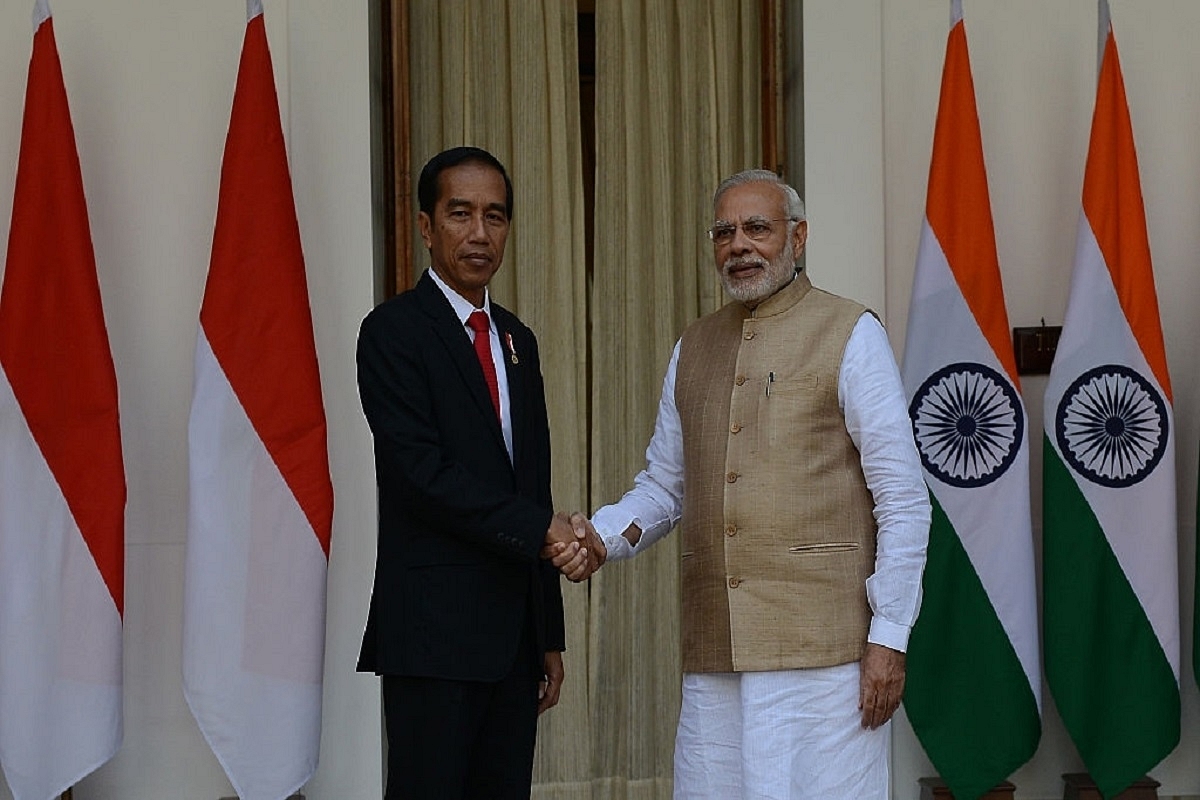Defence
Explained: Why India Wants To Develop This Indonesian Port 700 Km Away From Andaman And Nicobar

Prime Minister Narendra Modi (R) with Indonesia President Joko Widodo. (Getty Images).
India and Indonesia have recently completed a joint feasibility report for the development of the strategically important 'Sabang Port' in Indonesia.
The Sabang port is located at the northern-most tip of Aceh province of Indonesia. It is situated approximately 710 kilometres away from India's Andaman and Nicobar Islands.
But more importantly, Sabang is just 500 kilometres away from the Malacca Strait, which is globally recognised as one of the six crucial maritime chokepoints.
The Malacca Strait serves as a vital link between the eastern Indian Ocean and the South China Sea. Any route from the Pacific Ocean to the Indian Ocean requires passage through the Malacca Strait, as well as two other narrow passages, the Sunda and Lombok Straits.
This narrow passage handles a substantial share of the world's trade, accounting for 25-35 per cent of global trade volume, with China relying on it for around 80 per cent of its energy supplies. Given its strategic location, Sabang Port holds immense significance.
It was in 2018, that Indonesia's Coordinating Minister for Maritime Affairs, Luhut Pandjaitan, in a visit to India, had hinted at offering Sabang to India for military use.
The Maritime Affairs Minister, Luhut was quoted as saying, "the two countries can coordinate more in the maritime domain," adding that their "engagement will grow when the Sabang seaport is established with India."
“India and Indonesia have started naval drills in 2017, but we can explore more. This will become even better when the Sabang seaport is established with India. Sabang port has a depth of 40 metres which is good even for submarines,” Luhut has then said.
Experts have pointed out the strategic advantage of Sabang Port's proximity to the Malacca Strait.
They suggest that if the Indian Navy were to control Sabang Port, it could effectively disrupt China's access to a significant portion of its energy and raw material supplies from the Middle East and Africa, particularly in the event of a conflict between India and China.
Additionally, Sabang's strategic location would enable monitoring of the People's Liberation Army (PLA) Navy's movements in the Indian Ocean.
However, the development of the Sabang port has encountered challenges. Despite the statements made by Maritime Affairs Minister Luhut in 2018, no concrete agreement has been signed, and progress has been slow.
It took more than five years for just the completion of the joint feasilbilty study on the port. The Indonesian government is now examining the feasibility study for further approval.
There is also the question of the economic viability of the Sabang port. India is also looking to invest in an another port in the West Sumatra region of Indonesia, as well.
India and Indonesia's checkered history on executing joint infrastructure projects is also a cause of concern, according to India's Ambassador to Indonesia between 2012 to 2015, Gurjit Singh.
Ambassador Gurjit Singh said in an interview, "When the last president, Susilo Yudhoyono, came to India in 2011, there were a very large number of infra projects signed... but none of those projects ever fructified."
Another major concern is Indonesia's economic relationship with China. China is Indonesia's biggest export partner. Indonesia does not want to do anything which will completely ruin their economic relationship with China.
The Chinese recognise the threat of India choking their supply lines quite clearly as well. The Chinese, in a counter move, are also developing a naval base in Cambodia's Ream, in the Gulf of Thailand.
Media report suggests that the base will be capable of not only housing warships but also aircraft carriers, with the Chinese negotiating a deal to lease the base for thirty years with the Cambodian government.
The base will allow China to store weapons, berth and service warships, and post naval personnel. This will be the second Chinese naval base outside of the country and the first in the Indo-Pacific.
Cambodian government, on the other hand, has rubbished the reports and said, "granting access to the base would be in violation of Cambodia’s constitution".
All these moves on the global chessboard are significant, especially in the backdrop of the ongoing border standoff between Indian and Chinese armies along the entire line-of actual control (LAC) and the Chinese increasing military aggressiveness in the South China Sea against nations like Taiwan, Vietnam and the Philippines.
Support Swarajya's 50 Ground Reports Project & Sponsor A Story
Every general election Swarajya does a 50 ground reports project.
Aimed only at serious readers and those who appreciate the nuances of political undercurrents, the project provides a sense of India's electoral landscape. As you know, these reports are produced after considerable investment of travel, time and effort on the ground.
This time too we've kicked off the project in style and have covered over 30 constituencies already. If you're someone who appreciates such work and have enjoyed our coverage please consider sponsoring a ground report for just Rs 2999 to Rs 19,999 - it goes a long way in helping us produce more quality reportage.
You can also back this project by becoming a subscriber for as little as Rs 999 - so do click on this links and choose a plan that suits you and back us.
Click below to contribute.
Latest